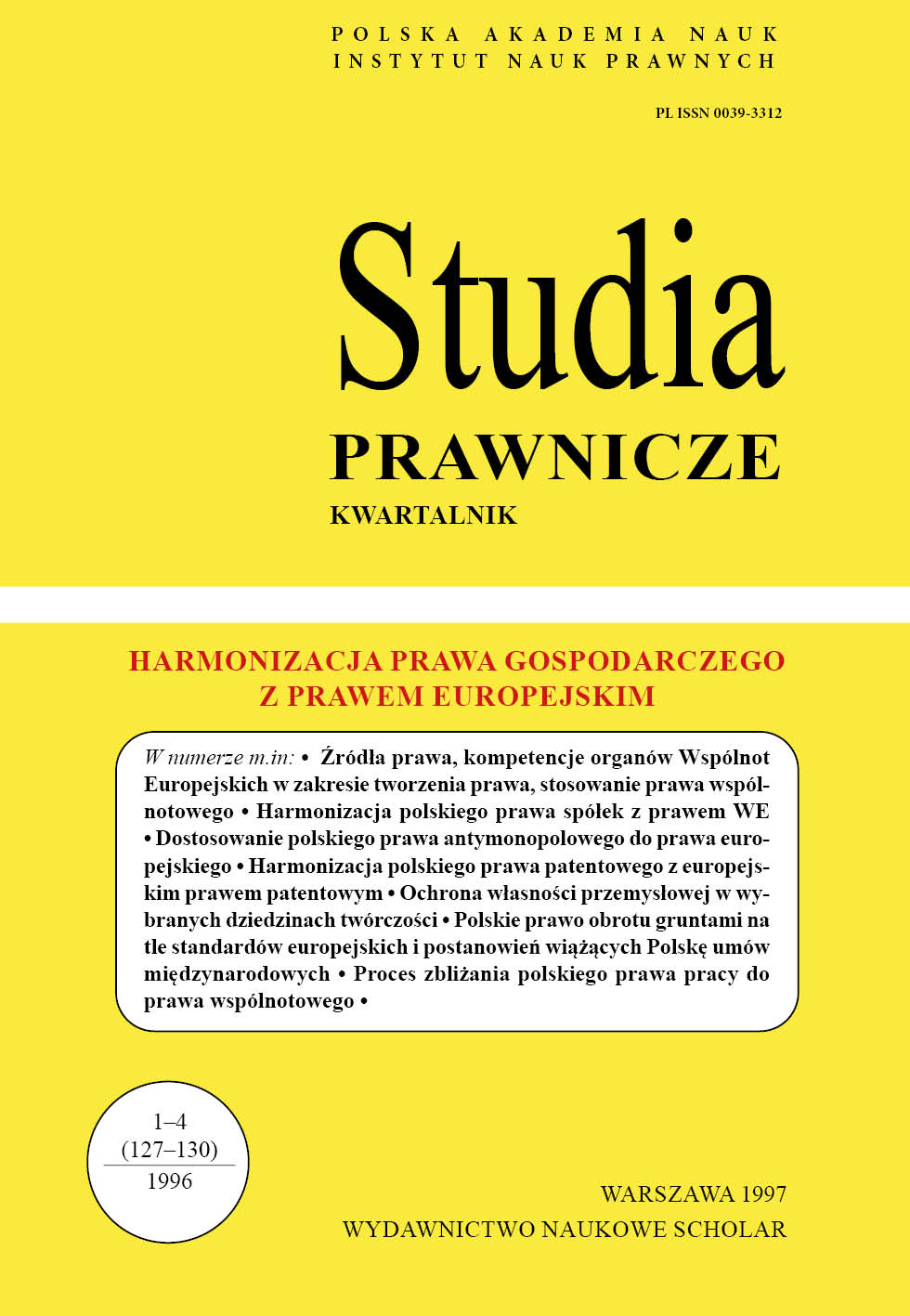Ochrona własności przemysłowej w wybranych dziedzinach twórczości (harmonizacja prawa polskiego z prawem europejskim)
Protection of industrial property in selected areas of creativity (harmonisation of Polish law with European law)
Author(s): Helena Żakowska-HenzlerSubject(s): Law, Constitution, Jurisprudence
Published by: Instytut Nauk Prawnych PAN
Keywords: industrial property; harmonization of the law with the EU; Convention on the Grant of European Patents; biotechnological invention; legal protection
Summary/Abstract: The prohibition on the patenting of plant varieties [contained in Article 53 (b) of the European Patent Convention] covers those categories of solutions that can be protected under the International Plant Protection Convention concluded in 1961 (UPOV).Article 53 (a) [of the European Patent Convention], which excludes the patentability of inventions the use of which is contrary to legal order or violates fundamental principles of morality, is cited as the basis for the prohibition of patenting inventions [relating to the human body].A feature of the Directives on the protection of the topography of semiconductor products [Directive 87/54 on the legal protection of the topography of semiconductor systems] is the wide discretion left to members in determining the legal form and rationale for protecting these products. Indeed, few [of its] provisions are binding.The decisive point in time for assessing the admissibility of protection [of a topography of integrated circuits, pursuant to Article 2 of Directive 87/54] is the point in time at which an exclusive right arises under national law. Indeed, protection should be granted to topographies that jointly meet two conditions: they are the result of the creator’s own intellectual effort and are not widely known among specialists.In a situation [where the person using a protected topography becomes aware that their act interferes with the exclusive rights of another person, it is assumed under Directive 87/54 that] the third party retains the right to continue to distribute the product containing the protected topography, and the right holder’s claim can only concern payment of appropriate remuneration. The entitlement of a third party to use the topography is thus clearly stated, as well as the designated scope of activities that the third party may undertake in respect of the protected topography within the scope of its entitlement.
Journal: Studia Prawnicze
- Issue Year: 1996
- Issue No: 1-4
- Page Range: 191-230
- Page Count: 40
- Language: Polish

